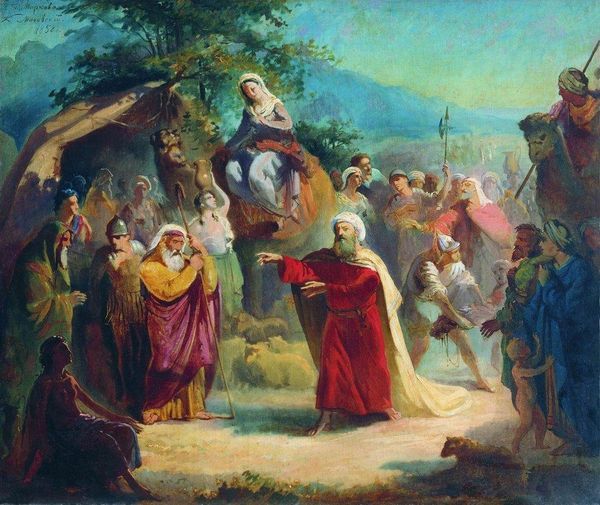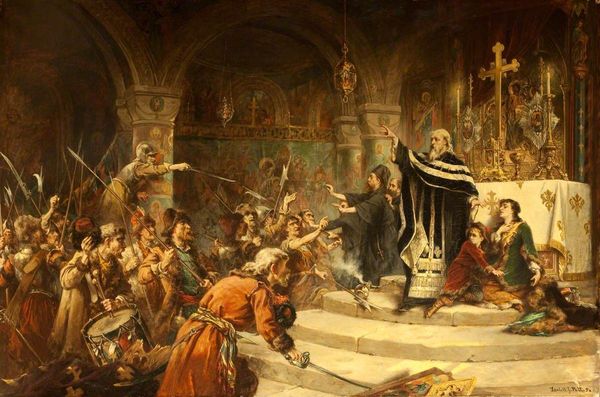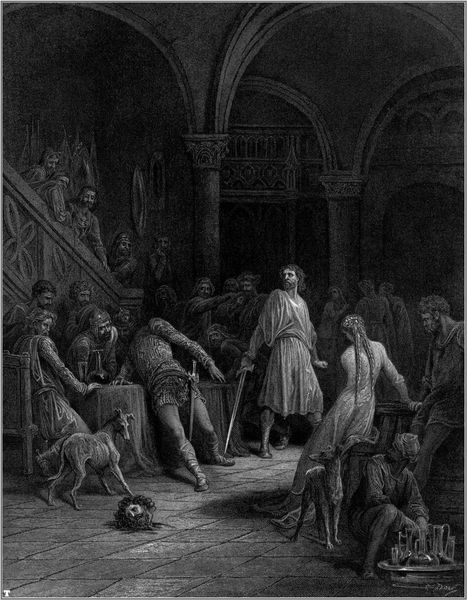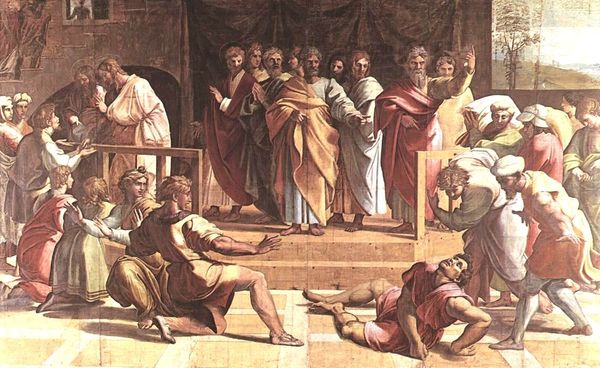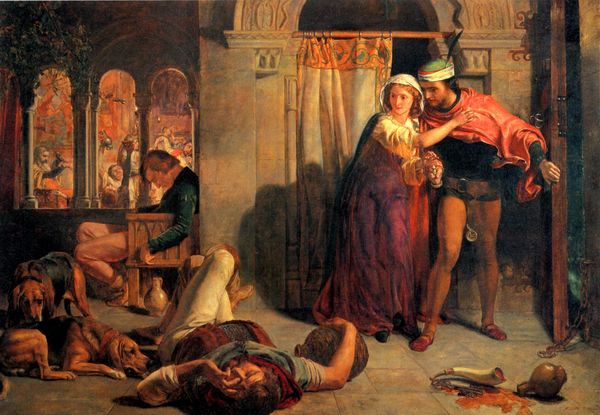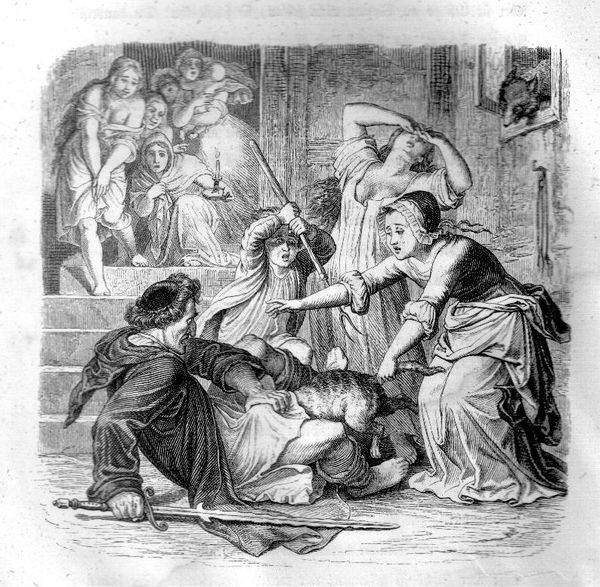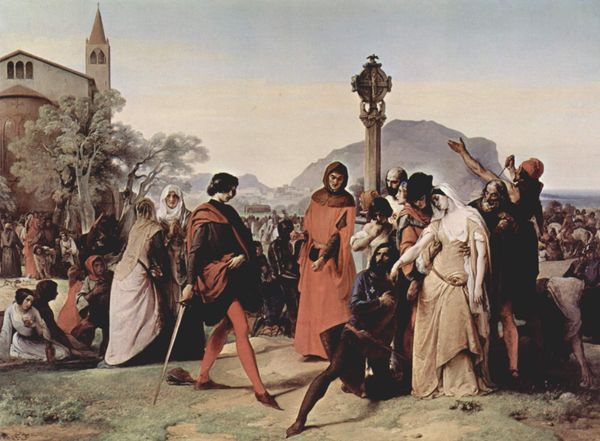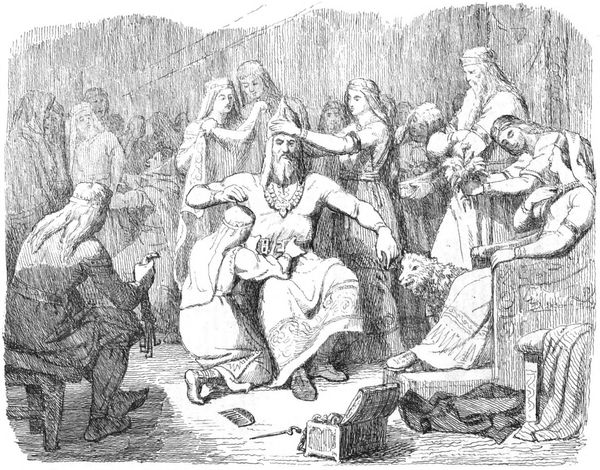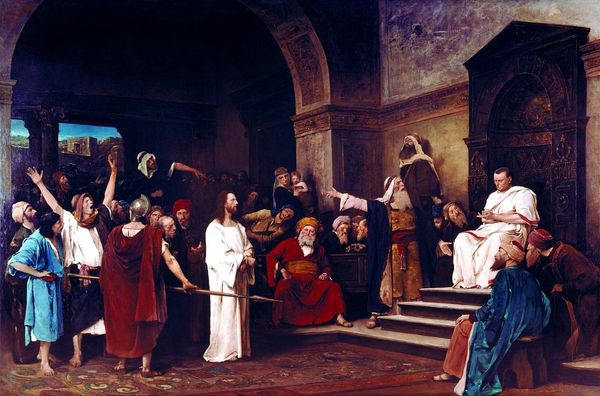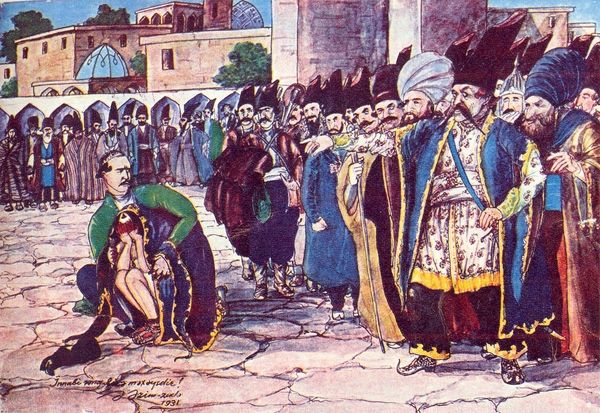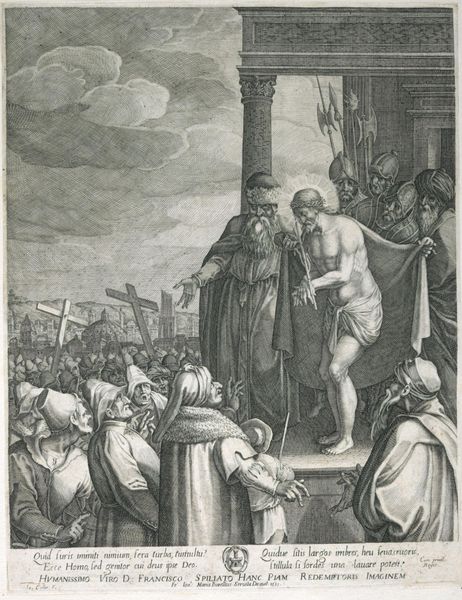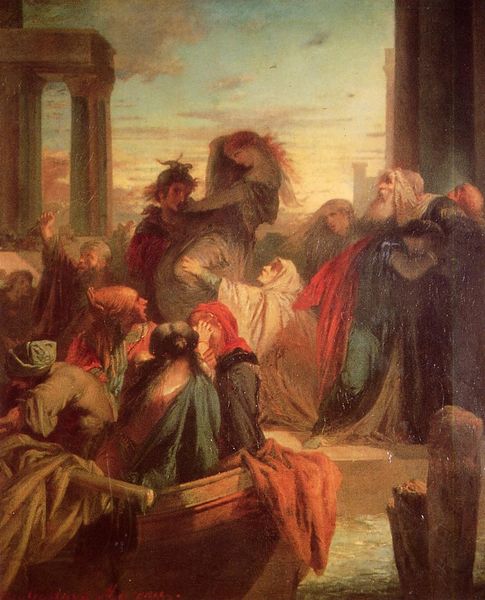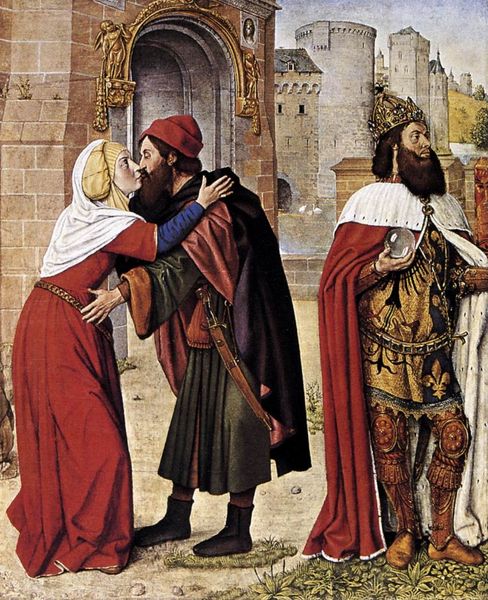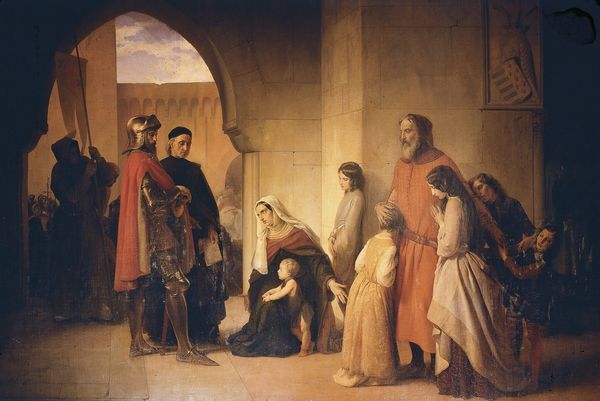
painting, oil-paint
#
portrait
#
narrative-art
#
painting
#
oil-paint
#
figuration
#
oil painting
#
famous-people
#
romanticism
#
russian-avant-garde
#
genre-painting
#
history-painting
#
academic-art
Dimensions: 226 x 330 cm
Copyright: Public domain
Editor: We're looking at "Court Pugacheva", an oil painting by Vasily Perov. It’s… chaotic. So many figures, a real sense of unrest and impending doom hangs in the air. How do you interpret this work, thinking about its historical context? Curator: This painting offers a window into the social and political tensions of 19th-century Russia. Perov, a prominent member of the Peredvizhniki movement, often used his art to critique social injustices. What stands out to you about the figures surrounding Pugacheva? Editor: There are these suppliants begging at his feet on one side and stern men with axes standing by him on the other. It feels performative somehow – like theatre. Curator: Exactly. Think about what it meant to depict such a controversial figure. Pugacheva led a massive peasant rebellion against Catherine the Great. Perov's choice to portray him – not as a monster, but as a man receiving supplication, hints at a broader commentary on power dynamics and popular dissent. How do you think this image resonated with the audiences of his time, in the context of reform movements of that era? Editor: Well, given that peasant reforms hadn’t quite happened yet and would have been something everyone was actively discussing and involved in… Maybe people felt a sense of uneasy camaraderie, seeing a fellow “everyman” at the seat of power? Curator: That’s a great point. While Catherine's image was carefully constructed as an enlightened leader, the memory of the Pugachev rebellion lingered. Paintings like this forced viewers to confront uncomfortable truths about social inequalities and the state's control. Do you think the scale of the canvas and historical nature affects our perception and interpretation of justice within society and museums even today? Editor: Absolutely, especially with museums often being seen as authoritative and keepers of truth, this placement of a rebel feels revolutionary! I hadn’t really thought about how deeply implicated even style and composition could be to that reading, especially relative to contemporary socio-political context. Curator: Indeed, it highlights art’s unique potential to document socio-political turmoil, challenging conventional narratives of authority, while simultaneously reflecting societal beliefs.
Comments
No comments
Be the first to comment and join the conversation on the ultimate creative platform.
